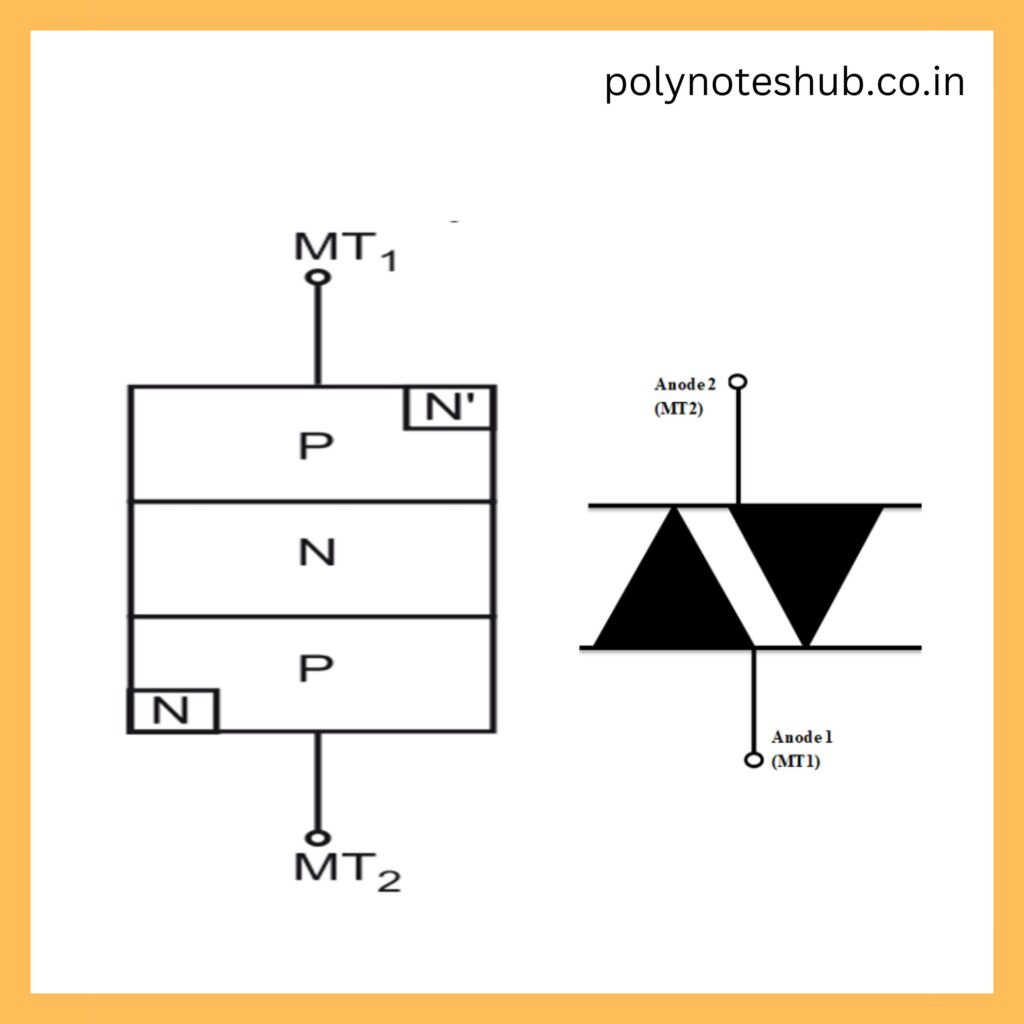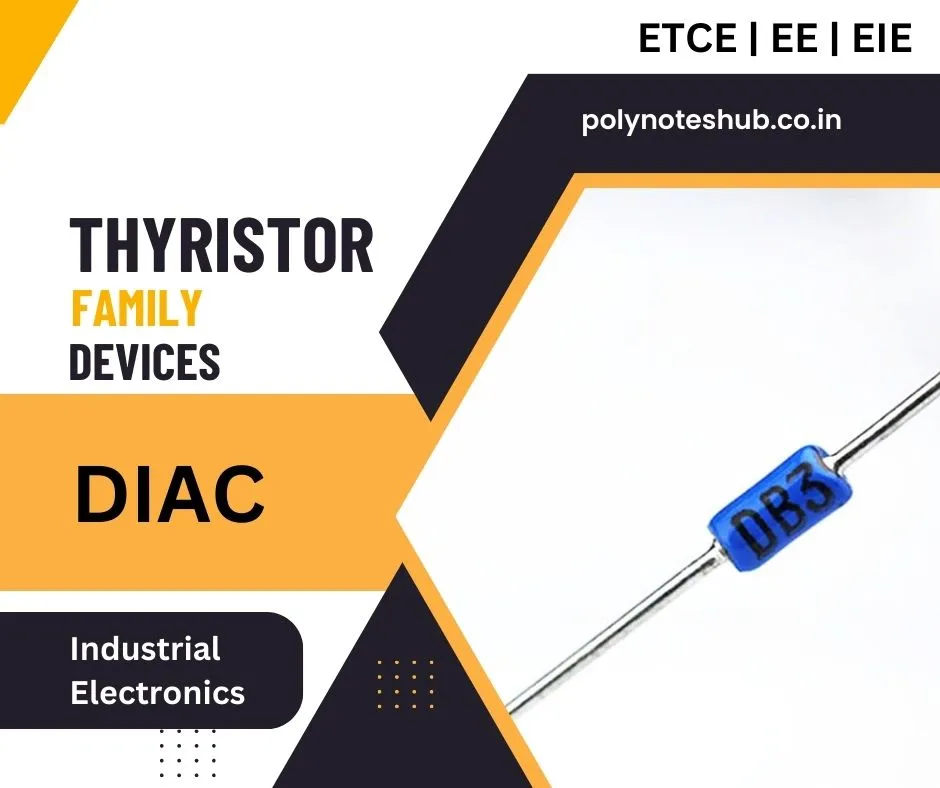What is DIAC?
It is a bidirectional avalanche diode that can be turned ON by either positive or negative alternating of AC input voltage.
A DIAC (Diode for Alternating Current) is a member of the thyristor family and is essentially a two-terminal semiconductor device. It is designed to conduct electric current when the voltage across its terminals reaches a certain break over voltage, and it can be turned off when the current drops below a certain level.
Construction
It is a two-electrode device and can be conducted in either direction. So, it is an ac switch. It has four layers – PNPN and PNPN’. Two terminals are MT1 and MT2. The doping level is the same in all the layers.

Working Principle
If MT1 is positive with respect to MT2 layer then PNPN conducts. This happens when the voltage of MT1 exceeds the breakover voltage VBO1 and a large current flows through the DIAC.
When terminal MT2 is positive concerning MT1, then the PNPN’ layer starts conducting. This conduction starts when the voltage at MT2 exceeds the breakover voltage VBO2. The current in this case flows in the opposite direction.
V-I Characteristics
The VI characteristics of a DIAC (Diode for Alternating Current) represent the relationship between the voltage (V) applied across its terminals and the current (I) flowing through the device. The VI characteristics of a DIAC are unique and distinct from regular diodes or other thyristors due to its negative resistance behavior.

Applications
- Used in Light Dimming Circuit
- Used in Heater Control Circuit
- and also in Motor Driver.
Read More
